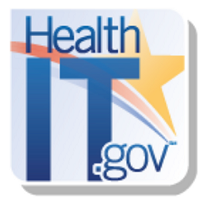 By Genevieve Morris / Principal Deputy National Coordinator for Health IT , &
By Genevieve Morris / Principal Deputy National Coordinator for Health IT , &
Liz Palena Hall / Policy Analyst and Nurse Advisor, ONC
Twitter: @ONC_HealthIT
National Health IT Week offers an annual opportunity to promote awareness of the value of health IT and to highlight progress made across the healthcare ecosystem. National Health IT Week took place this year from October 2nd to October 6th. As part of this year’s National Health IT Week, the Office of the National Coordinator for Health Information Technology (ONC) hosted a Long-Term and Post-Acute Care (LTPAC) Listening Session to hear from health IT developers and LTPAC stakeholders about some of the challenges in achieving interoperability across acute, post-acute care, and long-term care settings. LTPAC providers and developers play a critical role in providing care for patients who experience frequent transitions across multiple settings and have a range of complex, chronic conditions. These transitions between care settings create the need for communication and coordination between each service point. As ONC works to implement national interoperability objectives, it is important to engage and learn from a diverse set of stakeholders, including the LTPAC industry, as well as patients and caregivers.
During the National Health IT Week listening session, several themes emerged, including the business case for LTPAC health IT adoption, interoperability, transitions of care, standards, and certification.
Consider the Business Case for Interoperability
Participants emphasized the need to consider fiscal drivers and the business case for health information exchange when advancing technical solutions for interoperability. They noted the infrastructure for interoperability is not free—something that is understood and well accepted in other sectors such as banking with their network of ATMs, but has not yet translated into healthcare. LTPAC facilities are often faced with the high cost of health IT infrastructure investments.
Transitions in Care – Content and Timing are Important
When patients are transitioned from one clinical setting to another, both the content and the timing of the exchange are critical. In a paper-based environment, patient records frequently arrive on the gurney with the patient. Too often, in an electronic environment, the electronic record or summary of care arrives days after the patient has arrived. Listening session participants noted that a patient’s health information needs to arrive either before admission or concurrent with the patient’s arrival. Post-acute staff often spend considerable time and resources chasing information during transitions to continue the safe, effective delivery of care.
We also heard that more work needs to be done to address the various information needed by the receiving care team and the quality of that data so actionable information is available for clinical decision-making once the patient is settled into the new care setting. Many participants acknowledged that the challenges in receiving a patient’s information during care transitions are often process and policy related, rather than the result of technical limitations. We heard that many of their systems have the technical capabilities to receive the patient’s information, but effective workflow processes such as those that support information sharing across the interdisciplinary team are needed for seamless continuity of care.
Need for Less Variability in Standards Implementation and Support for Application Programming Interfaces (APIs)
Health IT developers noted during the session that there is variability in how standards related to the common clinical data set (e.g., medications, problems, labs) are implemented and many of them have developed “work arounds” such as rules within their software to address the different ways they receive standard-based information from other systems. They said that less variability in implementation of standards could support improved interoperability.
A number of developers also recognized the importance of APIs that can support interoperability and are working towards further developing this capability in their systems.
Health IT Certification – Make it Simple
Participants encouraged a focus on connectivity and key health IT certification functions that address the needs of patients transitioning across care settings. They noted the certification process needs to be simplified and cited the example of car emissions inspections where—in certain states—cars pull up, get inspected, receive a result, and drive off in a matter of minutes.
To affirm their commitment to interoperability, LTPAC health IT developers and technology organizations, including Briggs Healthcare, Casamba, Cantata Health, Health Care Software, Kno2, LG CNS Healthcare Solutions, MatrixCare, National Association for the Support of Long Term Care (NASL), Netsmart, PointClickCare, and Optima Healthcare Solutions signed the ONC Interoperability Pledge. The pledge supports the achievement of open, connected care and the shared responsibility to advance interoperability through consumer access, transparency and standards. This is a significant step forward on the healthcare system’s journey of making electronic health information readily available in a timely manner to improve the health and care of patients.
ONC commends these LTPAC organizations and health IT developers for their commitment to achieving nationwide interoperability and looks forward to continued collaboration to ensure that when individuals are at their most vulnerable, their healthcare information is widely available to provide them with better care and create better outcomes.
This post was originally published on the Health IT Buzz and is syndicated here with permission.
